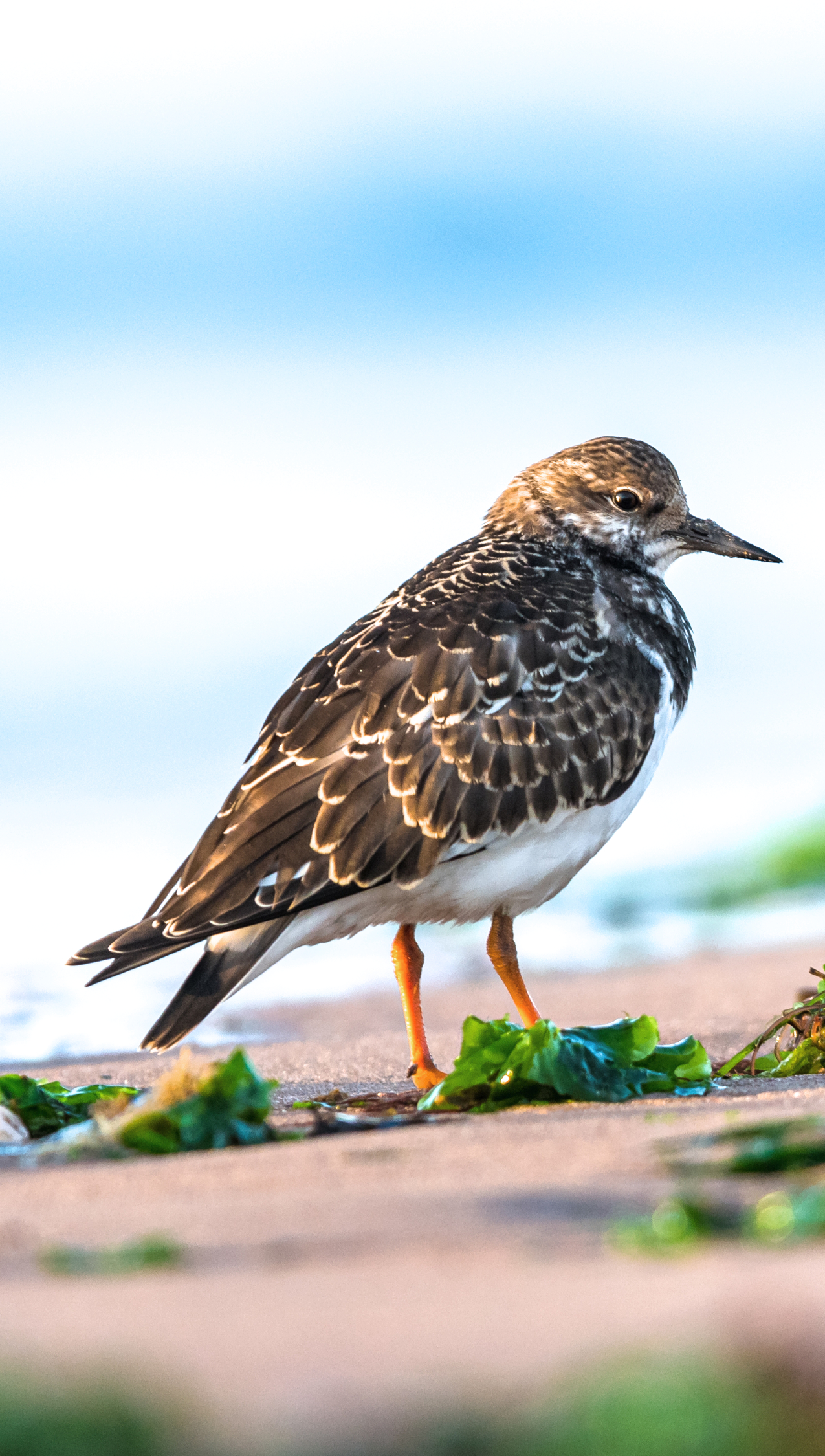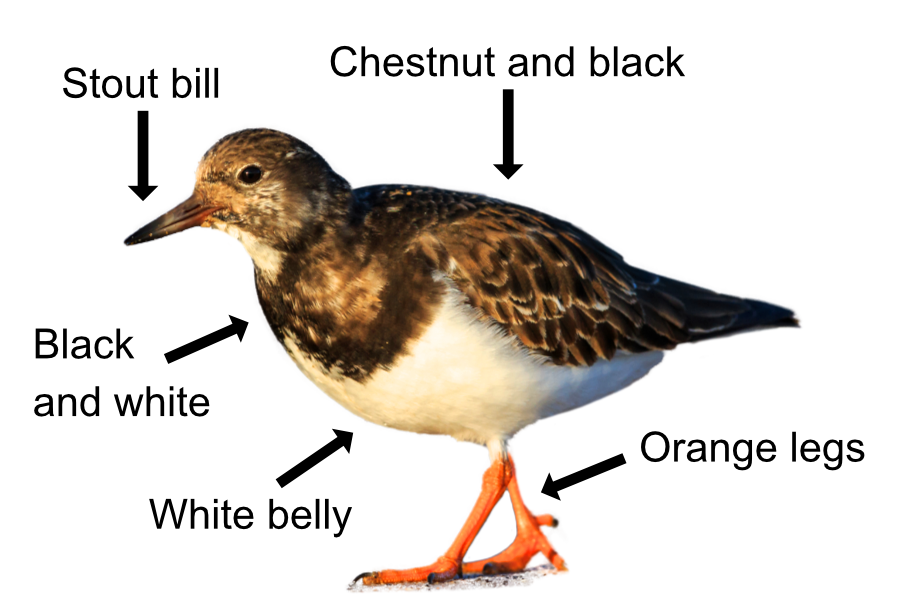
You guessed it, a Turnstone actually turns stones when searching for food along the shore. It is a beach comber that is most at home on rocky, seaweed covered coasts and mussel beds. Turnstones can frequently be found on piers and promenades, where tourists drop chips and other morsels. They can become incredibly tame, often running in between people’s feet when feeding!

Turnstones look like scruffy, oversized Ringed Plovers and are well camouflaged amongst the stones. They are a chunky, low slung looking wader with a chestnut and black back, white belly, and a black and white head and breast. They have a short, stout black bill that tapers to a point and orange legs. In flight, they have striking white marks on the wings, back and rump. Their call is a rippling, metallic triple "kit-it-it".
They often search for insects in small groups, by turning stones or probing seaweed with their bill while dodging the waves. They can even lift rocks as big as their own body! By hunting this way, Turnstones find food other waders can't reach. They are seldom stationary, running about the rocks, being opportunist feeders and enjoying a wide variety of food, including mussels, barnacles, periwinkles and crabs.
Turnstones breed on the Northern Europe and Greenland coasts, returning to their breeding grounds in pairs as they are monogamous and pairs may remain together for several breeding seasons. The nest is a scrape in the ground into which 4 eggs are laid which hatch after 22 days. The youngsters can feed themselves but are still cared for by both parents, though mum may leave before they can fly, about 20 days later.
The 50,000 Turnstones seen here in the winter breed in Northern Europe and Greenland. The ones that come from Europe are passage migrants on their way to Africa and the ones from Greenland usually stay, doing their moult before going back again in May. Turnstones are one of the longest lived waders with an average lifespan of 9 years, though they can live for up to 19 years.
Their Latin name is 'arenaria interpres' where 'arenaria' is from the Latin 'arenarius' meaning 'inhabiting sand' and 'interpres' means 'messenger' as the man that named them (Linnaeus) thought that the Swedish word 'tolk' for 'interpreter' was what they used to describe them. In fact, the dialect word they were actually using means 'legs' and they were describing a Redshank. It is funny how scientists in the past wrongly named so many birds. Turnstones in North America are called 'Ruddy Turnstones' as there is a second species, the 'Black Turnstone', which lives on the Pacific coast of North America.